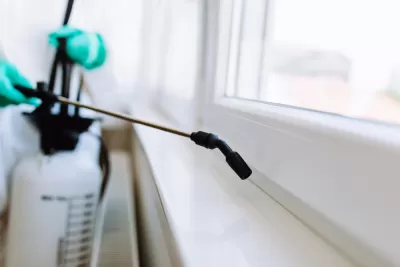For children who have asthma, pests like cockroaches and mice can trigger allergic reactions and lead to recurring and expensive hospital visits. Could insurers save money by investing in housing-based improvements like pest management services?

There’s a connection between one’s home environment and asthma. An array of home-related factors can trigger or worsen asthma: pests such as cockroaches and mice can cause allergic reactions, and secondhand smoke, air pollution, and mold can make it worse. In New York City, children with asthma who are exposed to pests are three times more likely to be hospitalized, and they account for more than two-thirds of asthma-related rehospitalizations annually, according to the city’s Department of Health and Mental Hygiene (DOHMH).
The department recently launched a pilot project to zero in on pest-related pediatric asthma by delivering comprehensive pest management to patients’ homes—and tapping a group of Medicaid health insurers to fund it, even though such nonmedical interventions aren’t typically covered. If the three-year Medicaid Together Improving Asthma Program pilot succeeds in reducing repeat hospitalizations, the insurers should reap returns in the form of direct health care cost savings—but if not, a $1.2 million fund is in place to mitigate any losses.
“The environment in which a person lives directly affects their health,” says DOHMH project manager Beatrice Mauger, launch lead for Medicaid Together. “Our hope is to have a win-win for the health care sector and their clients. That can be achieved if this model shows the health care sector that investing in housing-based improvements can generate sustainable financial benefits.”
Over the years, other programs have worked more generally to tackle home health hazards that could exacerbate asthma, such as the U.S. Department of Housing and Urban Development’s Healthy Homes Program and the National Institute of Food and Agriculture’s Healthy Homes Partnership. At Boston Medical Center...
FULL STORY: Getting Medicaid to Pay for Pest Control

Study: Maui’s Plan to Convert Vacation Rentals to Long-Term Housing Could Cause Nearly $1 Billion Economic Loss
The plan would reduce visitor accommodation by 25,% resulting in 1,900 jobs lost.

North Texas Transit Leaders Tout Benefits of TOD for Growing Region
At a summit focused on transit-oriented development, policymakers discussed how North Texas’ expanded light rail system can serve as a tool for economic growth.

Why Should We Subsidize Public Transportation?
Many public transit agencies face financial stress due to rising costs, declining fare revenue, and declining subsidies. Transit advocates must provide a strong business case for increasing public transit funding.

How to Make US Trains Faster
Changes to boarding platforms and a switch to electric trains could improve U.S. passenger rail service without the added cost of high-speed rail.

Columbia’s Revitalized ‘Loop’ Is a Hub for Local Entrepreneurs
A focus on small businesses is helping a commercial corridor in Columbia, Missouri thrive.

Invasive Insect Threatens Minnesota’s Ash Forests
The Emerald Ash Borer is a rapidly spreading invasive pest threatening Minnesota’s ash trees, and homeowners are encouraged to plant diverse replacement species, avoid moving ash firewood, and monitor for signs of infestation.
Urban Design for Planners 1: Software Tools
This six-course series explores essential urban design concepts using open source software and equips planners with the tools they need to participate fully in the urban design process.
Planning for Universal Design
Learn the tools for implementing Universal Design in planning regulations.
City of Santa Clarita
Ascent Environmental
Institute for Housing and Urban Development Studies (IHS)
City of Grandview
Harvard GSD Executive Education
Toledo-Lucas County Plan Commissions
Salt Lake City
NYU Wagner Graduate School of Public Service




























